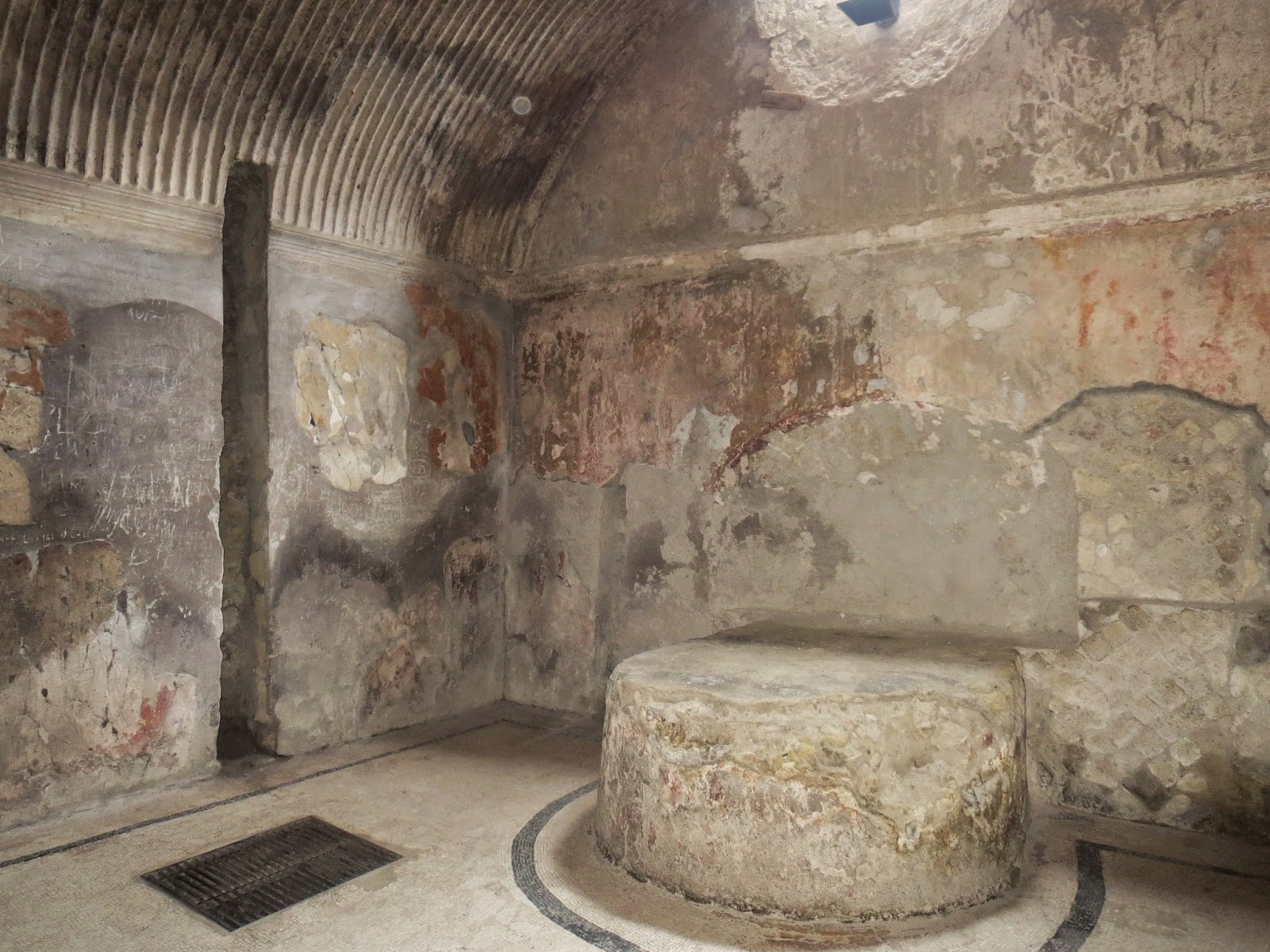Here we are on our way to Herculaneum with our students from Plymouth along with
Jeff Johnston and Dianne Tuzzolino both from Alfred State College.
You can see the beginning of the city..old in the front, new in the back.
Our students- all 39 frozen ones!
 |
| Map layout of the area |
You can see the depth of the volcanic rock. Where the people are coming out was the way to the sea The statue of the mayor is pointing or welcoming the visitors to the city.
The picture below shows the water way exiting from the city. The boat houses are the black area to the left of the ramp.
These pictures are of the boat houses in which they discovered these bodies which had been preserved from the quick covering of the city.
The gasses killed them instantly evaporating all the fluid and moisture out of the body and air. Then everything was buried so no oxygen could destroy what it covered.
.JPG)
Samnite House. The rainwater is caught here in the atrium and saved. Look how beautiful the tiled floor is and this is 2000 years old.
The picture below is the ceiling / roof which is covered but the water comes out of the figurines and drips below.
More pictures of the house.
This view shows the chariot tracks that are worn into the stones.Here is a house of wealth. They know this because there are benches to sit outside the house. The servants sat outside and waited for the master's wants. The more servants you had and followed you down the street the wealthier the man was.
The house beyond is a house that is not as wealthy. There is wood in between the floors and it doesn't have a place for your servants to sit. They think this is may have been a boarding house.
Even back then they had a fast food place! The colored stone is made of marble which doesn't come from Italy. This is a sign of wealth. It is thought that these pieces are left over from projects.
I tried to get this to come out better but it is too light. Look carefully and you can see how pretty the floor is.
Pots that have been found. This space was originally a grocery store.
This wood that has been preserved into charcoal by the extreme heat.
The toilets....wooden benches along the wall where you could sit. The trench in the back is where the excrement went and the trough in the front was full of water. The users could take a stick with a sponge on the end of it and dip it in the water to wash with.
Here they have discovered the under street sewer system. The servants or house hold members would come and open the hole and pour down their excrement here which would drain out to the sea.
In this they found what kind of food was eaten. They also discovered that there must have been some kind of infection because there was a high count of white blood cells. They also found many articles of jewelry that must have fallen in. The British museum has the exhibit.
Men's baths.You see that they even had places above to store your things! And the floors are all mosaic.
Below
The woman's bath
The caloderia in these baths had warm pipes from the kitchen in the walls and floors so their bath area was warm.
The ceilings are arched so the condensed steam wouldn't drip off on the bathers' heads.

Here in the men's bath, the floor is buckled because of a major earthquake in 62 AD.
 The Plymouth State students and Prof. Talbot in front of some beautiful work inside a temple.
The Plymouth State students and Prof. Talbot in front of some beautiful work inside a temple.It is just hard to believe you are standing in something as old as 2000 years ago. And they will start excavating this month some more to see what else there is.
The old...the new...and Mount Vesuvius
Ciao :-)
.JPG)
.JPG)







.JPG)


.JPG)


.JPG)





.JPG)



No comments:
Post a Comment